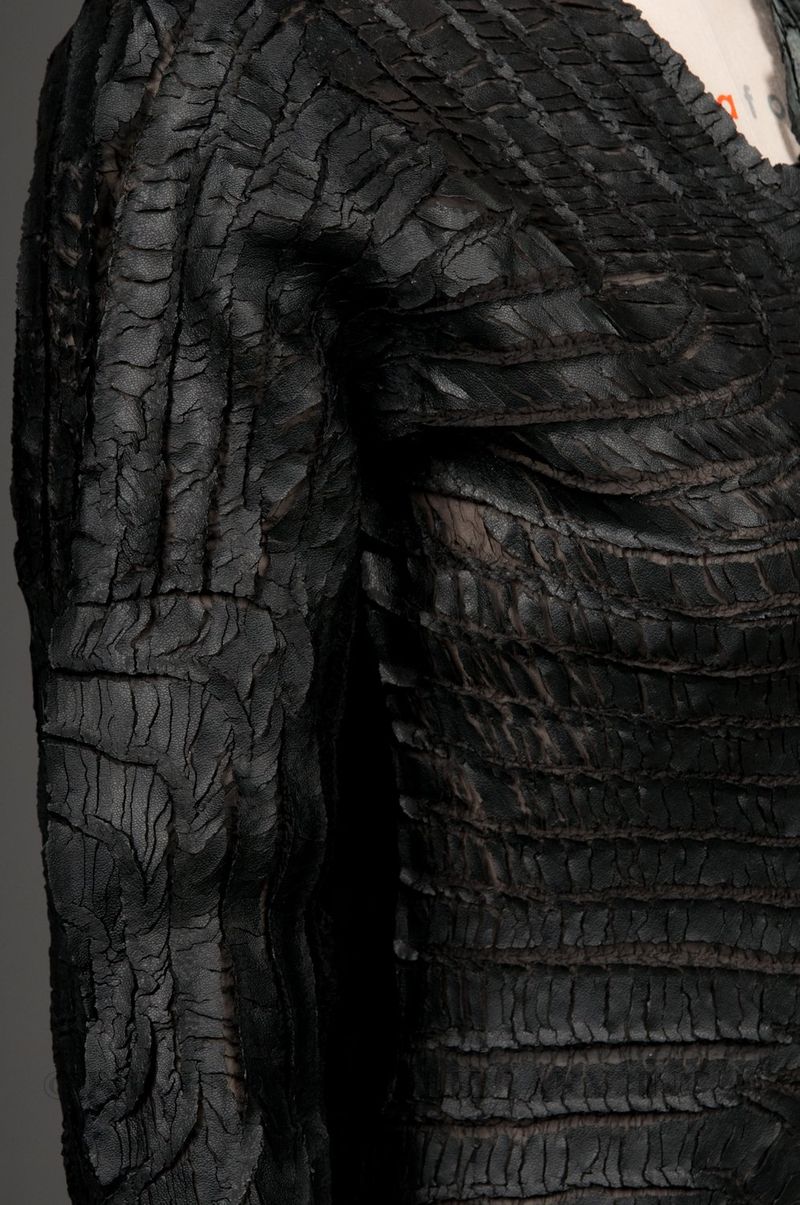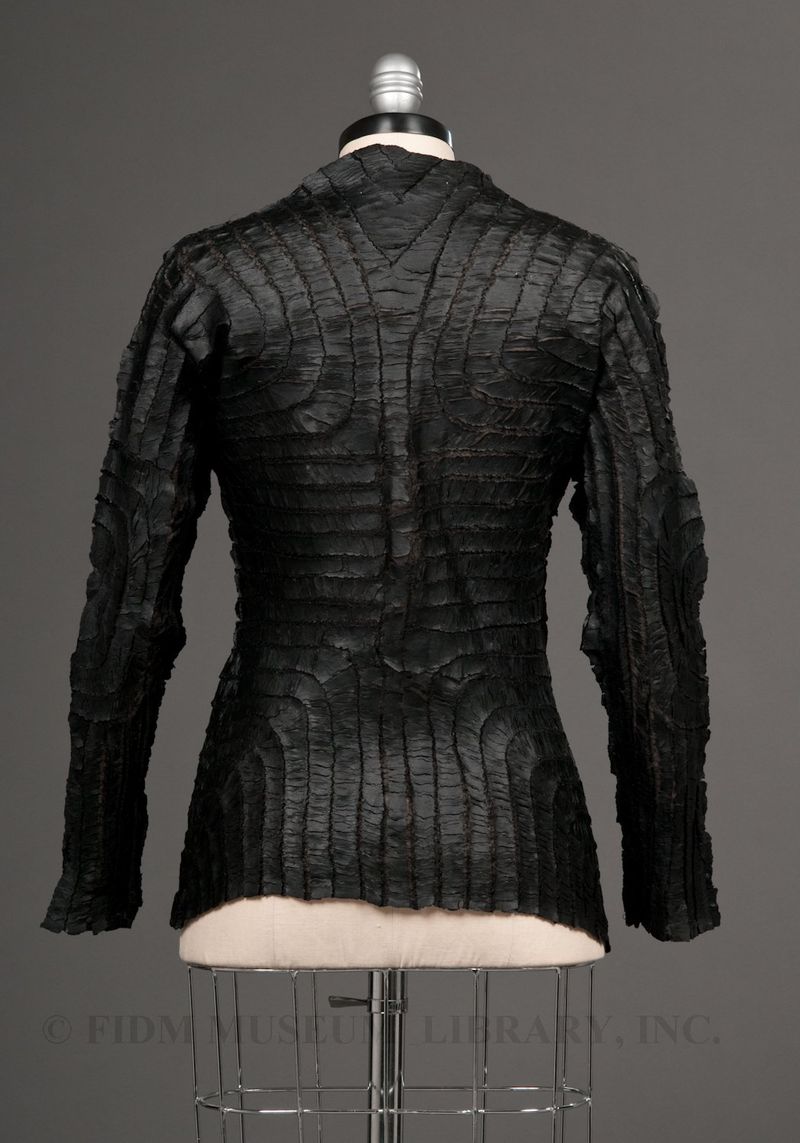Yoshiki Hishinuma
Popular conceptions of Japanese textile design usually focus on textiles similar to the sky-blue stenciled and embroidered silk seen in this 19th century kimono dressing gown. Made of natural fibers and featuring patterns and motifs borrowed from the natural world, these textiles are the work of skilled artisans trained in a variety of techniques, including weaving, dying, painting and embroidery. The resulting textiles are prized works of art, demonstrating the importance of textile traditions and workmanship to Japanese culture. Lovely as they are, these textiles are only one branch of textile creation in Japan. In the early 1980s (just as Japanese fashion designers emerged on the world stage) Japanese textile designers began experimenting with new, often synthetic, textiles. Capitalizing on Japan's strong history of textile design and manufacturing, designers used both traditional and invented techniques to create and manipulate new textiles into existence. Like their traditional predecessors, these textiles are produced using time and labor intensive techniques. Yoshiki Hishinuma c. 2000 Museum Purchase 2005.5.31 Hishinuma's career as a textile designer began out of necessity. Trained as a fashion designer, Hishinuma worked as an assistant to Issey Miyake in the late 1970s. In 1987, he opened a studio and began designing under his own name in 1992. When designing his eponymous line, Hishinuma couldn't find the textile materials he envisioned. Rather than working with a manufacturer, Hishinuma himself began experimenting with natural and chemical processes to alter the finish and form of synthetic textiles. These textiles then become garments in a process that Hishinuma oversees from start to finish. To create the shirt seen here, a base fabric of sheer polyester was heat laminated with strips of reptile printed vinyl. More recently, Hishinuma utilized a knitting machine to create seamless garments designed to look like flowers.
Though Hishinuma produces his textiles primarily for garment construction, the garments seem almost secondary, a mere canvas to showcase the results of his textile experiments. The textiles themselves have such depth and visual interest that they become the primary focus. In this sense, Hishinuma's contemporary creations share a lineage with the more traditional textiles used in kimonos; neither textile depends on an interaction with the body to bring it to life. This stand-alone independence is a primary attribute of Japanese textile and garment design, which often focuses attention away from the body and towards the materials and/or silhouette.

